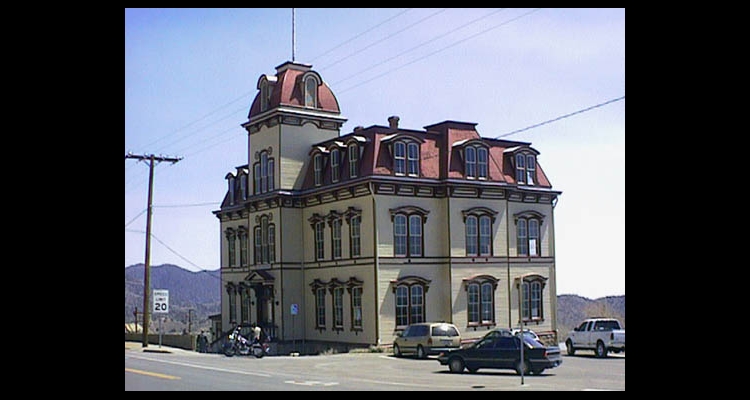Kaitty Holland Exhibit
“Out of the Closet: The Kaitty Holland Clothing Collection” debuted in May 2008 at Virginia City’s Historic Fourth Ward School Museum. The changing gallery exhibit, funded in part by Nevada Humanities, tells the story of a nineteenth-century mining family by showcasing the articles of clothing they treasured and preserved for over a hundred years. “Out of the Closet” features a delicate day dress, beaded blouses and capes, the elaborate ensemble Mary Holland wore to her Virginia City wedding, and two of her daughters’ elegant, late-Victorian graduation dresses.
The Kaitty Holland Collection represents more than an assortment of dresses. These expressions of the most significant events in one family's past give us a glimpse into the lives of ordinary people who witnessed two extraordinary mining booms. More than that, the garments acknowledge the presence of everyday women including the miners’ wives and daughters, dressmakers, and seamstresses, all of whom contributed to the daily life of their communities. Their legacy—too often defined by cooking, cleaning, and childrearing—can slip into history undocumented. The existence of the collection is remarkable because the items in it were preserved—for over three decades after Kaitty Holland’s death—by friends who understood their historic significance.
In 1870, Patrick Holland married Mary Sullivan in Virginia City, Nevada. The Hollands were among the two million natives of Ireland who immigrated to the United States in the wake of the mid-nineteenth century Great Potato Famine. They arrived in Virginia City in the mid-1860s—by now a place famous for its extraordinary mineral discoveries.
Prosperous and sophisticated, Virginia City defied the cliché of the frontier by becoming a fashionable enclave. Affluence gave women such as Mary the means to prove they were not living in a primitive outback. Instead, avant-garde became the norm, defining the Comstock as an international, cosmopolitan settlement. Women reached out to San Francisco, London, and Paris for everything that was new. They adapted the latest styles to suit their income levels.
The Hollands lived in the great mining town for the thirteen years following their wedding. In 1883, as Virginia City’s industry failed, the family moved to Butte, Montana, where mining was booming. They were joined by their Irish cohorts who had departed Nevada en masse. Miners’ wages started at $3.50 a day—less than the $4.00 paid on the Comstock during its heyday in the 1870s. Eventually copper became the source of wealth in this northern mining district, and Butte took on the moniker, “The Richest City on Earth.”
The six Holland children completed their public school education in Butte, where they graduated from high school. Commencements were formal occasions in the late nineteenth century, solemnized with speeches and ceremony. Students were expected to dress accordingly. “Out of the Closet” displays the stylish gowns worn by Margaret and Kaitty Holland. They are similar to those worn by girls around the country—including graduates of the Fourth Ward School’s High School Department.
The Holland daughters never married. Eventually, Kaitty moved to California where she died in 1973. Before her death—with her parents and siblings long gone—Kaitty entrusted her family’s cherished articles of clothing to neighbors who passed them from one to the next until a generous donation to Virginia City’s Historic Fourth Ward School Museum returned the collection to the historic mining community where the Holland story began.
The Historic Fourth Ward School Museum is open daily from 10 a.m. to 5 p.m. through October 31. For information, call 775-847-0975 or visit http://www.fourthwardschool.org/ic/
Article Locations
Related Articles
None at this time.
Further Reading
None at this time.
